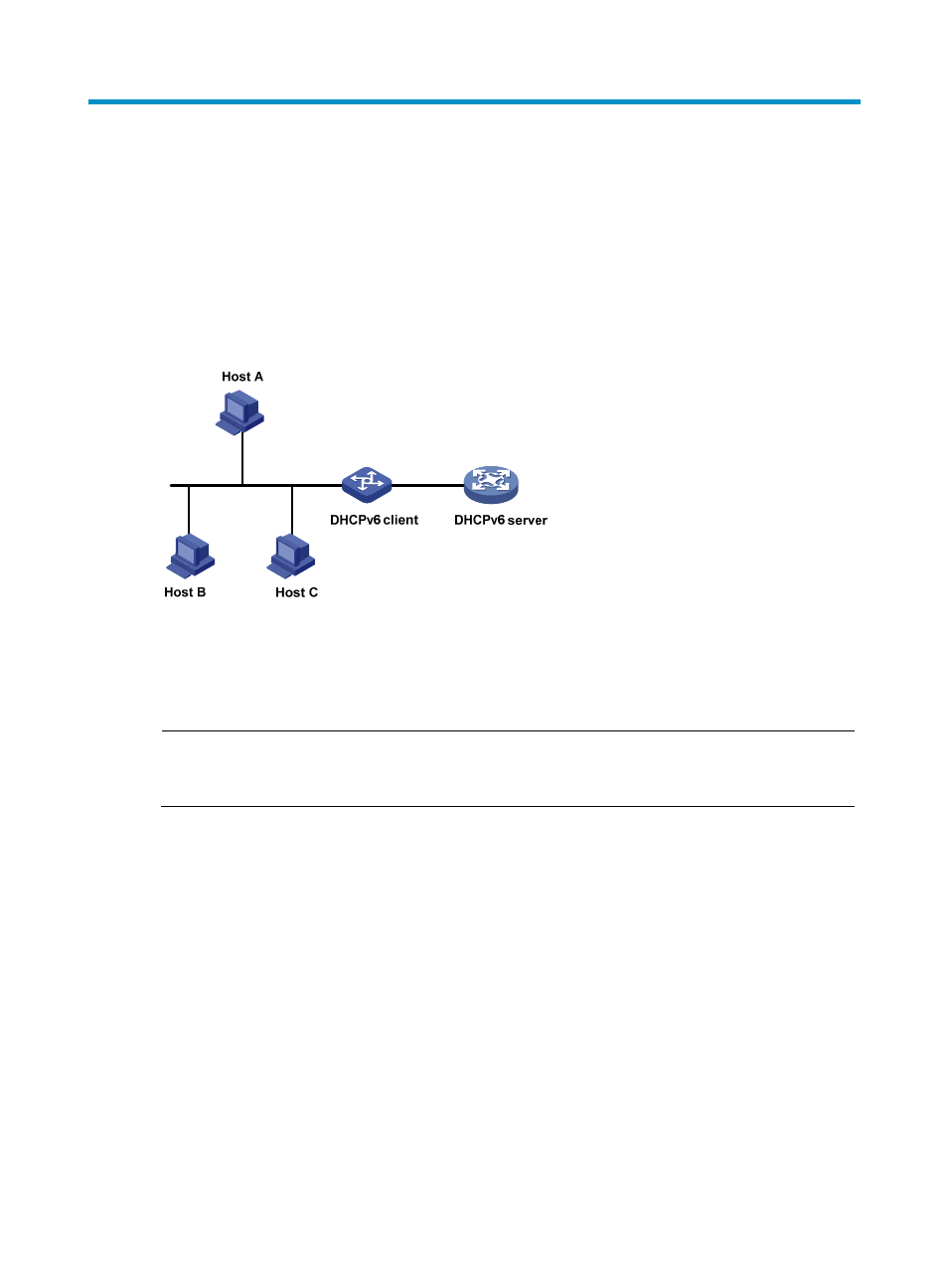Configuring the dhcpv6 server, Introduction to the dhcpv6 server, Application environment – H3C Technologies H3C SecPath F1000-E User Manual
Page 736: Basic concepts, Dhcpv6 multicast address, Duid

711
Configuring the DHCPv6 server
Introduction to the DHCPv6 server
Application environment
Figure 366 Typical DHCPv6 server application
As shown in
, the DHCPv6 server assigns the DHCPv6 client an IPv6 prefix to facilitate IPv6
address management and network configuration. After obtaining the IPv6 prefix, the DHCPv6 client
sends an RA message containing the prefix information to the subnet where it resides, so that hosts on the
subnet can automatically configure their IPv6 addresses by using the prefix.
NOTE:
A device serving as a DHCPv6 server assigns DHCPv6 clients IPv6 prefixes, but not IPv6 addresses, and
supports DHCPv6 stateless configuration to assign other configuration parameters.
Basic concepts
DHCPv6 multicast address
The multicast address FF05::1:3 identifies all DHCPv6 servers on the site-local network. The multicast
address FF02::1:2 identifies all DHCPv6 servers and relay agents on the link-local link.
DUID
A DHCP unique identifier (DUID) uniquely identifies a DHCPv6 device (DHCPv6 client, server, or relay
agent).